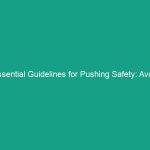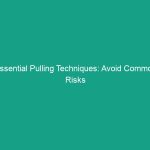Introduction
In today’s fast-paced world, ensuring the health, safety, and Environment (HSE) within workplaces is more crucial than ever. With increasing Regulations and a growing emphasis on corporate responsibility, organizations must prioritize Safety to protect their employees, assets, and reputations. One of the most effective ways to achieve this is through comprehensive Safety audits and inspections. This article will delve into the role of safety audits and inspections, exploring their significance, methodologies, and impact on Workplace Safety culture.
Understanding Safety Audits and Inspections
Before we dive deeper into the role of safety audits and inspections, it’s essential to differentiate between the two terms, as they are often used interchangeably but serve different purposes.
What is a Safety Audit?
A safety audit is a systematic evaluation of an organization’s safety management system. It assesses the effectiveness of safety policies, practices, and Procedures to ensure compliance with legal and regulatory requirements. Audits are generally conducted at regular intervals and involve a detailed review of documentation, interviews with personnel, and observations of work practices.
What is a Safety Inspection?
On the other hand, a safety inspection is a more hands-on approach that focuses on identifying Hazards in the workplace. Inspections are typically conducted more frequently than audits and are often unannounced. Safety inspectors examine equipment, work conditions, and employee behaviors to identify potential risks and ensure compliance with safety regulations.
The Importance of Safety Audits and Inspections
Understanding the role of safety audits and inspections is vital for any organization committed to fostering a safe work environment. Here are some key reasons why they are essential:
Regulatory Compliance
Safety audits and inspections help organizations comply with local, state, and federal safety regulations. Failure to comply with these regulations can lead to significant fines, legal repercussions, and damage to the organization’s reputation. Regular audits ensure that safety procedures are up-to-date and compliant with current laws.
Identifying Hazards
One of the primary objectives of safety inspections is to identify hazards before they lead to accidents or injuries. By proactively identifying risks, organizations can implement corrective measures and prevent potential incidents, thereby safeguarding the health of their employees.
Improving Safety Culture
Conducting regular safety audits and inspections promotes a culture of safety within the organization. When employees see that management prioritizes safety, they are more likely to adopt safe work practices themselves. This culture shift can lead to fewer accidents and a more engaged workforce.
Enhancing Operational Efficiency
Safety audits can also reveal inefficiencies in operational processes. By identifying areas where safety protocols may be lacking or not being followed, organizations can streamline operations, reduce downtime, and improve overall productivity.
Regulatory Frameworks Governing Safety Audits and Inspections
Various regulatory frameworks govern Workplace Safety audits and inspections. Understanding these frameworks is crucial for organizations to ensure compliance and effectively carry out their safety initiatives.
OSHA Regulations
In the United States, the Occupational Safety and Health Administration (osha) sets forth regulations that govern Workplace Safety. OSHA requires employers to provide a safe workplace and mandates specific safety audits and inspections. Organizations must familiarize themselves with OSHA Standards to ensure compliance in their audits and inspections.
International Standards
For organizations operating globally, adhering to international safety standards such as ISO 45001 is essential. This standard outlines the requirements for Occupational Health and safety management systems and emphasizes the importance of regular audits and inspections in maintaining safety standards across international borders.
Industry-Specific Regulations
Different industries may have specific regulations that govern safety audits and inspections. For instance, the construction industry has specific guidelines laid out by the ANSI/ASSP A10 standards. Organizations must ensure they are aware of and comply with any industry-specific regulations that may apply to their operations.
Best Practices for Conducting Safety Audits and Inspections
Implementing Best Practices is essential for conducting effective safety audits and inspections. Here are some guidelines to follow:
Develop a Comprehensive Safety Plan
A comprehensive safety plan should outline the organization’s safety policies, procedures, and objectives. This plan should serve as a foundation for conducting audits and inspections. It should also be reviewed and updated regularly to reflect any changes in regulations or operational practices.
Involve Employees in the Process
Engaging employees in safety audits and inspections fosters a sense of ownership and accountability. Employees can provide valuable insights into potential hazards and may offer suggestions for improvements. Involving them can also improve the overall effectiveness of the safety initiatives.
Document Findings and Follow Up
Thorough documentation of audit and inspection findings is crucial. Organizations should maintain records of identified hazards, corrective actions taken, and follow-up inspections to ensure issues have been resolved. This documentation can also serve as evidence of compliance during regulatory inspections.
Provide Training and Resources
Providing training and resources to employees on safety policies and procedures is essential for fostering a safety culture. Regular training sessions should be conducted to keep employees informed about safety protocols and the importance of adhering to them.
Case Studies: The Impact of Safety Audits and Inspections
Real-world case studies can provide valuable insights into the role of safety audits and inspections in enhancing Workplace Safety. Let’s explore a few examples:
Case Study 1: Manufacturing Plant
A manufacturing plant in the Midwest conducted a comprehensive safety audit to comply with OSHA regulations. The audit revealed several areas where safety protocols were not being followed, including inadequate machine guarding and lack of Personal Protective Equipment (PPE) usage. Following the audit, the management implemented corrective actions, including enhanced training and updated safety procedures. As a result, the plant saw a 40% reduction in workplace injuries within the following year.
Case Study 2: Construction Site
In a construction site in California, regular safety inspections identified recurring hazards related to Fall Protection. The site supervisor initiated a safety campaign that included additional training, weekly safety meetings, and improved equipment. After implementing these changes, the site recorded zero fall-related incidents for six consecutive months, demonstrating the effectiveness of proactive Safety Measures.
Challenges in Implementing Safety Audits and Inspections
While safety audits and inspections are critical for maintaining Workplace Safety, organizations may face several challenges in their implementation.
Employee Resistance
Some employees may view safety audits and inspections as a nuisance or an invasion of privacy. This resistance can hinder the effectiveness of the process. To overcome this challenge, it’s essential to communicate the Benefits of audits and inspections clearly and involve employees in the process.
Resource Constraints
Many organizations face resource constraints that limit their ability to conduct thorough audits and inspections. This may include a lack of trained personnel or insufficient time allocated for these activities. Organizations should prioritize safety and allocate necessary resources to ensure effective audits and inspections.
Keeping Up with Regulatory Changes
Regulatory frameworks are constantly evolving, and organizations must stay updated on changes that may impact their safety audits and inspections. This requires ongoing education and training for safety personnel to ensure compliance with the latest regulations.
Future Trends in Safety Audits and Inspections
The landscape of safety audits and inspections is continuously evolving. Here are some trends that are shaping the future of workplace safety:
Embracing Technology
Technology is playing an increasingly important role in safety audits and inspections. Tools such as mobile applications, drones, and AI-powered analytics are being used to enhance the efficiency and effectiveness of audits. These technologies can streamline data collection and analysis, allowing for quicker identification of hazards.
Data-Driven Decision Making
Organizations are now leveraging data analytics to make informed decisions regarding their safety initiatives. By analyzing historical safety data, organizations can identify trends and patterns, allowing them to proactively address potential hazards and improve overall safety performance.
Focus on Mental Health
As awareness of mental health issues in the workplace grows, safety audits and inspections are beginning to encompass psychological well-being. Organizations are recognizing the importance of mental health as a component of overall workplace safety and are implementing measures to support employees’ mental well-being.
Conclusion
In conclusion, the role of safety audits and inspections is pivotal in creating a safe and compliant workplace. By understanding their importance, adhering to regulatory frameworks, and implementing Best Practices, organizations can significantly reduce risks and cultivate a culture of safety. The insights gained from audits and inspections not only protect employees but also enhance operational efficiency and contribute to a positive organizational reputation. As workplace safety continues to evolve, organizations must remain committed to prioritizing safety through rigorous audits and inspections. To ensure the ongoing safety of your workplace, consider integrating regular safety audits and inspections into your operational practices today.


